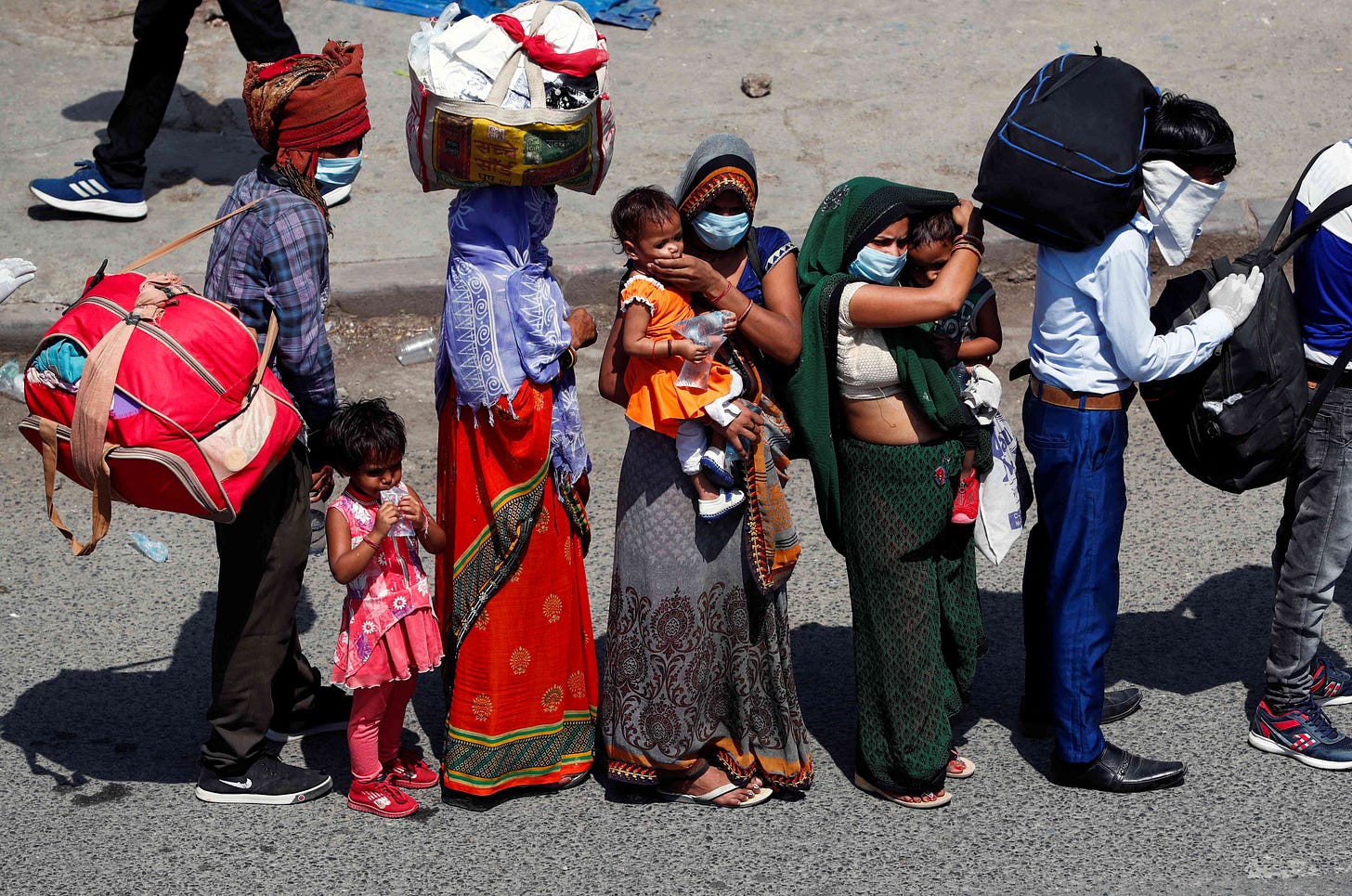The Political Fix: As the India growth story peters out, desperate states turn to nativist quotas
A consensus seems to be developing politically on reserving state jobs for locals.
Welcome to The Political Fix by Rohan Venkataramakrishnan, a newsletter on Indian politics and policy. To get it in your inbox every week, sign up here.
The newsletter is on a short break at the moment, but we've included a news story from Scroll.in's reporting team for you to read in the interim. Regular operations will resume in September. Thanks for reading!

(Illustration: Nithya Subramanian)
Shoaib Daniyal writes:
Less than five months into his latest innings as chief minister of Madhya Pradesh, Shivraj Singh Chauhan made a significant policy announcement. On Tuesday, the Bharatiya Janata Party leader declared that state government jobs would only be open to residents of the state. If implemented as law, Indian citizens from other states would be barred from taking government jobs in Madhya Pradesh.
The decision is drastic – but, of late, not unexpected.
In just the past year, as many as four states have either passed or promised legislation that reserves jobs for only their residents. In July, 2019 the Andhra Pradesh assembly passed the Employment of Local Candidates in Industries/Factories Act that makes it mandatory for industries to reserve 75% jobs for Andhraites.
In November, the ruling Maha Vikas Aghadi coalition in Maharashtra announced that it would reserve 80% of private sector jobs for Maharashtrians. A similar promise was made by the Jharkhand Mukti Morcha in its November manifesto, with 75% of jobs being reserved for Jharkhandis. After the party won the election, its chief minister Hemant Soren repeated this promise during his Independence Day speech. Haryana has already introduced an ordinance mandating 75% reservation for Haryanvis with a bill backing it up to be introduced in the upcoming monsoon session of its state legislature.
Economy driver
Contextualised for India’s massive population, the number of people moving across states for jobs is actually quite low. As per the 2011 census, India has around 5.6 crore inter-state migrants – which is only 12% of all Indian migrants. The vast majority of migrants actually seek jobs within their state’s borders. Compared to other large countries, research shows that India has very low rates of inter-state migration – China and Brazil were nearly four times higher while the United States was nine times. In fact, in a survey of 80 countries, India ranked last on internal migration: a situation that led the researchers to describe state boundaries in India as “invisible walls”.
While still lower than other countries, India’s economic boom in the 1990s and 2000s has helped push up this inter-state migration rate significantly. In the 1991 census, the number of inter-state migrants stood at only 2.7 crore. Over the next decade, this figure went up sharply, going up by 55%. In the decade after that, the rise was also substantial: 33%.
Driven by a desire for jobs, this flux was most visible in states which were either very rich or poor. From 2001 to 2011, for example, migration into Tamil Nadu went up by 39 times. The outflux of migrants from Bihar and Uttar Pradesh in the same period went up by 2.3 times and two times, respectively.

Families of migrant workers outside a railway station in Delhi on May 12. Credit: Adnan Abidi/Reuters
A small boost
Troublingly, however, the engine that drove this increased migration – India’s economic growth – seems to be juddering to a halt. For the year 2019-’20, Indian economic growth was the lowest in 11 years. Indians had got used to being one of the world’s fastest growing economies but the past two years have seen India drop down the list.
Even at the best of times, with its massive population, India needed high economic growth to provide jobs. But without this growth, the jobs situation has turned dire. The unemployment rate for 2017-’18 stood at a four-decade high of 6.1%. This has been made worse by the Covid-19 pandemic, with an incredible 12.15 crore jobs lost during April, the first month of the lockdown.
In the 1990s, a bright economy had spurred migration. Unsurprising then that the spate of nativist measures are coming in as jobs become scarcer. At a time of high growth, inter-state migration is welcomed for its efficient allocation of human resources. However, in a situation where jobs are scarce, it is inevitable that local communities would move to first guarantee jobs to its own members. This is what explains this sudden rise in nativist politics.
Bipartisan support
This lack of jobs is not only finding voice in the politics of identity but also in caste as the past decade has seen vigorous – sometimes violent – demands by dominant rural castes for job quotas. In spite of their rural wealth, powerful castes such as Haryana’s Jats or Gujarat’s Patels are finding it difficult to get jobs in the organised private sector, an indicator of how small it still is.
The force of these economic conditions means nativist job quotas for state residents is one of the rare policies in India to enjoy cross-party support. In Madhya Pradesh, for example, even as the current BJP government has moved to reserve government jobs, earlier in 2019, it was the Congress government that had promised private sector reservations.
While a consensus seems to be developing politically on nativist job quotas, the big hurdle remains the judiciary. Till now, nativist job quotas have been implemented in states such as West Bengal using the backdoor of state language criteria. However, this tactic is inapplicable to states such as Madhya Pradesh or Jharkhand, given that their official language, Hindi, is present in several states.

Protesterts set shops on fire as the Jat agitation demanding reservations intensified in Sonipat in Haryana in 2016. Credit: PTI
Legal challenge
Legally, nativist job reservations hit a number of roadblocks. For one, as per the Indian constitution, only the Union parliament is allowed to put in a residence requirement for government jobs – not a state legislature. Reservations in India are defined using socio-economic criteria, which has meant that the Indian judiciary has often ruled against nativist quotas. Moreover, the current spate of reservations surpass – by some distance – the Supreme Court’s 50% cap on quotas.
Notably, some of these objections also apply to the 2019 Economically Weaker Sections quota meant for poor forward castes. For the first time, a quota has been applied without social backwardness and it also surpasses the 50% cap. While the judiciary has not decided on the constitutionality of the measure yet, unlike in other new quotas, it has also not stayed it, allowing it to be implemented on the ground. This would make any future legal decision to scrap the quota practically rather difficult.
Backers of nativist quotas are counting on this new form of reservation attracting the same lenient treatment that the courts gave the forward caste quota.


